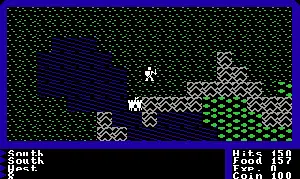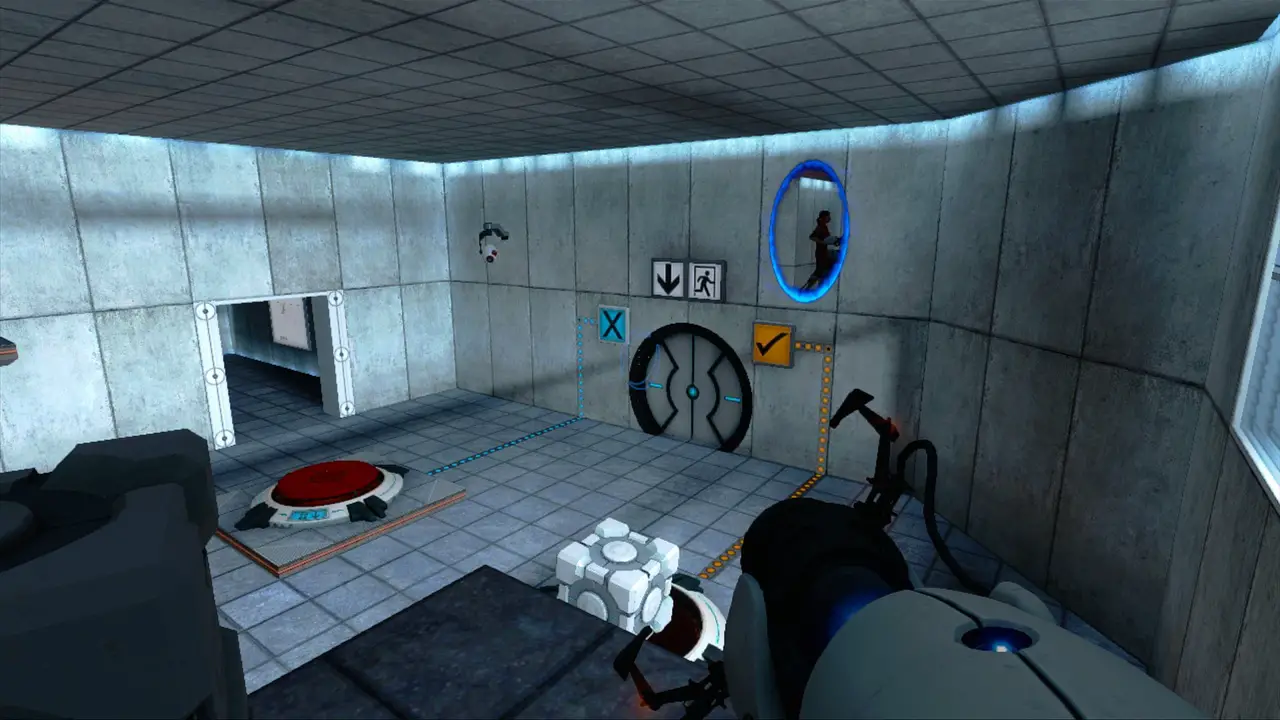There’s no doubt that it takes incredible talent and patience to create a competent video game, which is a game that welcomes one into its world with a guiding hand that neither condescends nor betrays the player. It takes an excruciating attention to detail to make something people will use to willingly waste their time. That said, it’s incredible to realize that many student-developed video games exist, especially when you consider how busy college students truly are.
Imagine taking on the task of developing a video game while also attending college classes. The idea is ludicrous, but, surprisingly, many students have designed games in this manner.
Four of these student-developed video games are “Spacewar!” (1962), “Ultima I” (1981), “Wizardry: Proving Grounds of the Mad Overlord” (1981) and “Portal” (2007). Luckily, these students spent their time well: the work they put into these games certainly paid off because each of them contributed to the advanced industry that exists today.
Spacewar! (1962)

Martin Graetz, Stephen Russel and Wayne Wiitaneon were all research assistants at MIT in 1961. This also happens to be the year that Digital Equipment Corporation gave the university a PDP-1 mini-computer.
When Graetz, Russel and Wiitaneon began using their school’s new device, they thought it might be fun to make more “interesting displays” for it. With that in mind, they began developing “Spacewar!” The three research assistants, who had considerable help from MIT students, had a build of the game by 1962.
The game is, more or less, what it sounds like. It takes two players, and each one controls a small spaceship. Each ship comes equipped with an endless slew of torpedoes and can be rotated 360 degrees.
The player must also use their ship’s thrusters to avoid enemy fire and the gravitational pull of a star at the center of the screen. Originally, the game did not have the gravity mechanic, but a graduate student decided to add it to create an obstacle for the players. You can play the game here if you would like.
Remarkably, just as the PDP-1 is one of the earliest concepts of the modern computer, “Spacewar!” is also one of the earliest concepts for a computer game. Every single multiplayer experience that you have had through a video game owes thanks to those who developed the 1962 outer space adventure.
“Ultima I” and “Wizardry: Proving Grounds of the Mad Overlord” (1981)

It’s hard to mention “Ultima” without bringing up “Wizardry” as well. After all, both games set out to digitize the table-top role-playing game in two very different ways. Notably, creative college students designed each of these games.
The process of developing “Ultima” started with freshman Richard Garriot at the University of Texas in the early 1980s. According to “Official Book of Ultima,” Richard Garriot and his friend Ken Arnold finished their design in less than a year.
The game has the player control a single hero on a quest to kill an evil wizard, which is fairly standard stuff as far as early computer games are concerned. Gameplay consists of exploring a world where science fiction and fantasy collide. Players can find dungeons to crawl through, monsters to fight and even a space shuttle to purchase if they have enough gold.
Though many prototypes came before it, “Ultima I” is considered to be the beginning of western CRPGs. You can find many parallels between its gameplay and the “The Elder Scrolls” and “Fallout” series. All of these games consist of a single hero on a great quest, and each of them gives the player the freedom to complete the quest however they want.

“Wizardry,” released the same year as “Ultima,” is strictly dubbed a “dungeon crawler,” which is a simple, role-playing game where a player takes control of a character, or in “Wizardry’s” case, a party of characters, and explores a vast dungeon filled with insidious creatures.
Developed by students Robert Woodhead and Andrew Greenberg at Cornell University, “Wizardry” found it’s depth of gameplay in character and party customization rather than exploration and player-freedom. The player can have six characters in one party, each with their own class and attributes. Players have to balance the skills of their party in order to retrieve the sacred amulet at the end of the dungeon and beat the game.
While the “Ultima” series went on to inspire Western video game developers, “Wizardry” saw most of its success in Japan. In fact, the series pioneered what is now referred to as the JRPG. Interestingly, modern JRPG mechanics, such as turn-based combat and party customization, started with “Wizardry.”
Both of Square Enix’s quintessential examples of this genre, “Final Fantasy” and “Dragon Quest,” still sell millions of copies in Japan. The success that each of these franchises have achieved is largely due to the development and release of “Wizardry.”
“Portal” (2007)

In 2006, students at DigiPen University developed a game called “Narbacular Drop” and uploaded it to their website. The gameplay includes the player controlling a princess in a fantasy setting. The princess could project two interconnected portals on certain surfaces within the game. Then, the player must solve puzzles by placing these two portals around the environment in order to make progress.
Those who have played Valve’s “Portal” will recognize this gameplay loop since it is nearly identical to that of “Narbacular Drop.” However, this is not a mere coincidence. In fact, the same students who created “Drop” had already been working for a year on “Portal” by July 17, 2006.
While gameplay remained largely the same, the setting and perspective of “Portal” are quite different from those of “Drop.” The camera of the game takes a first-person point of view, and the portal mechanic is portrayed through a large, futuristic firearm.
Upon first glance, “Portal” might look like any other mindless, “sci-fi” shooter where the goal is to absolutely demolish anything that moves. When given further inspection, however, even at a brief glimpse of gameplay, it’s easy to tell that “Portal” is quite unique.
In fact, the game redefined the genre and gave it an entirely new gameplay perspective. Rather than the pinpoint accuracy and catlike reflexes needed for other FPS games, “Portal” relies on critical thought and puzzle-solving capabilities.
Because both forms of the genre offer something to the medium, it doesn’t mean that one is better than the other. It’s mainly important to note that “Portal” was a game developed by students who weren’t afraid to create something unparalleled.
Though college may be busy and stressful, it’s still possible for students to take initiative and encompass their ingenuity. If the creators of the student-designed video games hadn’t spent their free time creating new forms of entertainment, perhaps the industry would be different from how it is today.
After all, some of the most creative thinkers are students, so don’t be afraid to embrace your own talent and develop your best ideas. As you can see, it worked well for others, and it could work well for you, too.

















